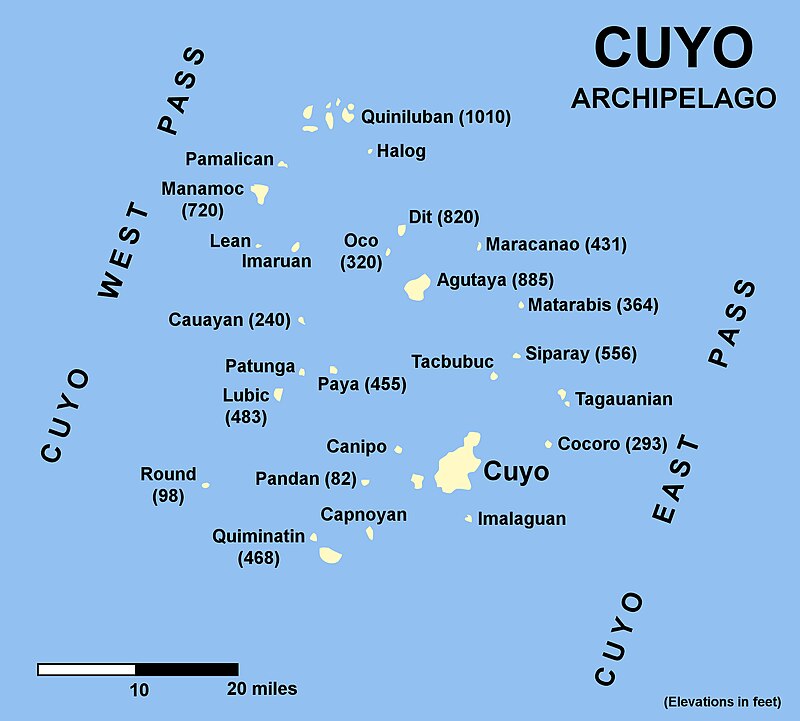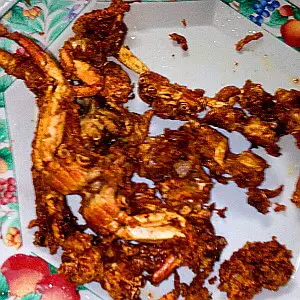Crabbing is an exciting activity I happen to witness during my recent trip to the remote island of Cuyo, a volcanic island between the islands of Palawan and Panay in the Philippines (Figure 1). This article describes the activity and provides insights for conservation and management of natural resources.

Dodokon: The Intriguing Crab Species
As part of my task in a United Nations Development Program (UNDP) project, I lectured on the value of biodiversity to human life. A workshop followed the speech where the participants coming from five communities in the municipality of Rizal identified economically important species in their respective barangays. They plotted these resources on maps attached to the walls of the lecture hall.
I noticed several unfamiliar words stuck on resource map of participants coming from Barangay Rizal. They drew and pasted on the map a crab species unknown to even a colleague living in the place and me. It’s remarkable how the locals can discriminate certain species of crabs and give them unique names. They call the crab “dodokon.” Collecting dodokon forms part of their crabbing activity during low tide.
Intrigued how “dodokon” looks like, I told Marge, the director of the campus, that I would like to make a tour along the coast to document the species. It also presents an opportunity to use my newly cleaned Leica D-vario lens that had been kept for years after I inadvertently submerged it in the water while crossing a river during one of my field trips. She arranged for an early morning trip to a nearby sea grape farm about three kilometers away from our quarters.
Crabbing Tour
It was almost seven o’clock in the morning when my colleagues and I made a quick visit of the latô (sea grape) farm in Barangay Rizal, Magsaysay in the island of Cuyo. The school driver brought us in the appointed place in less than 15 minutes. A tour guide met us upon arrival and walked with us to the shore.
We waited a moment and realized that only one raftsman was around to give us a tour of the latô farm. My colleagues suggested that I take the first raft and start the tour as I still have a meeting at 9 o’clock with research coordinators of the extramural campus of our university. As research director, they need my guidance on the new research agenda of the university.
I thought that Elmer, the raftsman, will bring me around the intricate arrangement of latô enclosures. But around mid-way of the trip through the murky waters, he told me to stand back at the other end of the raft, about three meters from the rear end. The purpose is to achieve balance in the flimsy bundle of bamboo poles. He placed a large stone on his side and submerged half his body into the muddy substrate then wore an improvised swim googles to see underwater. I thought he was collecting sea grapes but learned later that he was collecting crabs as he tossed several crabs into a plastic pail while navigating the shallow waters.
What’s inside the pail? It’s the dodokon (see below).

Crabbing as a Sustainable Livelihood for Coastal Fisherfolks
Crabbing is a sustainable source of food for the fisherfolks of Rizal as they wait for their latô farms to produce enough volume for commercial purposes. As long as the habitat is undisturbed, the muddy areas next to the mangroves can yield an unending supply of crabs to meet subsistence needs. In mangrove areas next to polluted bays or estuaries, subsisting on such crabs will make one cringe. Crabs are filter feeders and contaminated organic substances may contain toxins that can threaten human life through the process of bioaccumulation.
The residents of Rizal are fortunate because they still have pristine mangrove forests free from pollutants. Houses on stilts just like those found in urban areas are nowhere in sight. One can still enjoy the crunchy, dodokon delicacy just like the one we consumed when we dined back in our base.



